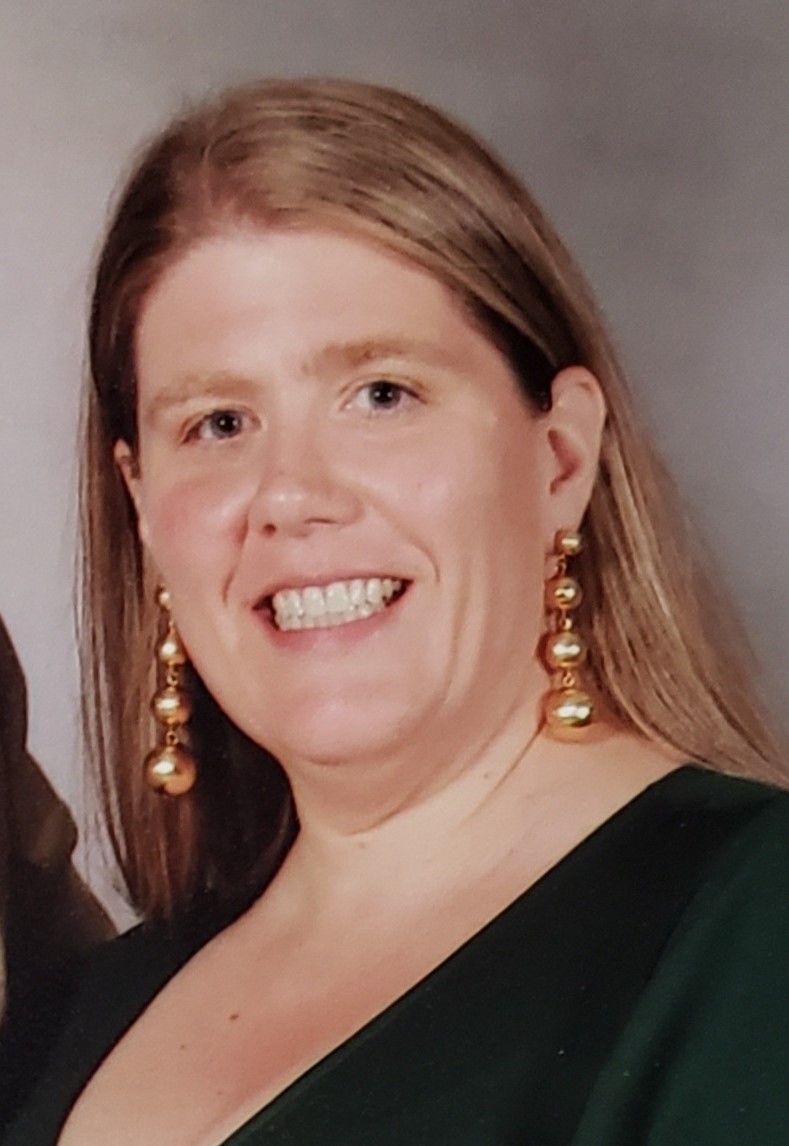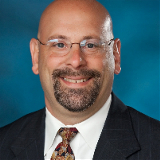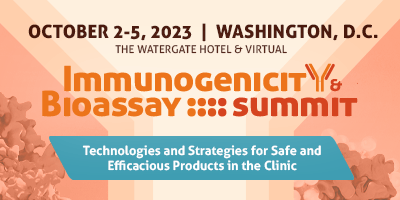Cambridge Healthtech Institute第11回年次
Optimizing Bioassays for Biologics
(バイオロジクスに対するバイオアッセイの最適化)
新興モダリティ時代におけるバイオアッセイ開発成功の実証
2023年10月4日〜5日
10月4日(水)
Registration Open12:00 pm
BIOASSAY DESIGN AND POTENCY ASSAY DEVELOPMENT
バイオアッセイデザインとポテンシーアッセイの開発
Chairperson's Opening Remarks
Faye Vazvaei, Executive Director, Merck
Comparing Four Parameter Logistic Regression with Log Log Linear Models in Clinical Luminex Assays
 Jianfang Hu, Senior Director, Pfizer
Jianfang Hu, Senior Director, Pfizer
Linear regression is a commonly used model for sample concentration calculation in multiplex clinical Luminex assays. In theory, four parameter logistic regression (4PL) is preferred when percent recovery based on linear regression is not satisfying in desired assay range. We compared percent recovery and assay precision from both models, and our results indicate that four parameter logistic regression may not perform as well as expected.
Phase-Appropriate Potency Assay Development for mAbs Targeting Viral Pathogens
 Vaishali Vinod Sarode, Senior Scientist, Vir Biotechnology
Vaishali Vinod Sarode, Senior Scientist, Vir Biotechnology
Development of potency assays for infectious diseases comes with a unique set of challenges. Fc engineered monoclonal antibodies require development of multiple bioassays that reflect the complex mechanism of action (MOA), such as virus neutralization and clearance via effector function. Potency assays need to be in place for early clinical development and validated at a later stage. This presentation will discuss the development of bioassays to support late-stage programs including the challenges faced and lessons learned.
Change of Drug Product Formulation-Mediated Innovation for Potency Development and Calculation
 Jan Amstrup, PhD, Principal Scientist, Novo Nordisk AS
Jan Amstrup, PhD, Principal Scientist, Novo Nordisk AS
A potency assay used for several years showed not to be sensitive to low-affinity insulin analogs as well as impacted by the Drug Product matrix. A story regarding implementation of two new potency assays as well as the learnings will be described.
 Development and Optimization of Potency Assays for ATMPs and Utilization of the Matrix Approach
Development and Optimization of Potency Assays for ATMPs and Utilization of the Matrix Approach
 Jessica Weaver, Associate Director, CMC Bioanalytical Operations, Operations, BioAgilytix
Jessica Weaver, Associate Director, CMC Bioanalytical Operations, Operations, BioAgilytix
Potency assays for biologics are an expectation of regulators and play an important role for ATMPs. ATMPs may require multiple potency assays owing to the complexity of the mode of action (i.e. Matrix Approach). Here representative case studies are used to demonstrate approaches to potency assay development and optimization in a matrix approach, as well as the application of data modelling/potency calculation to a GMP Relative Potency assay.
Refreshment Break in the Exhibit Hall with Poster Viewing2:30 pm
Cell-Based Bioassay Optimization Using DoE
 Kate Getliffe, PhD, Cell Biologist, Cell-Based Bioassay and Potency Assay Expert, Independant Consultant
Kate Getliffe, PhD, Cell Biologist, Cell-Based Bioassay and Potency Assay Expert, Independant Consultant
Cells are arguably the most critical reagent in any cell-based bioassay. Understanding cells is essential to the development of a robust bioassay and can be invaluable during technical transfer and troubleshooting. This presentation will describe a DoE (Design of Experiments) based approach for the optimization of cell handling methods for improving the robustness of cell-based bioassays, which is in line with the new ICH Q14 guidelines (enhanced approach). The approach will be described in detail including risk assessment and selection of critical parameters, scoping studies, screening studies, and optimization studies, alongside some qualitative examples of the results that can be achieved.
Functional Antibodies in Dried Blood to Measure Protection against RSV
 Jonne Terstappen, MD, PhD Candidate, Pediatric Infectious Diseases, Wilhelmina Children's Hospital
Jonne Terstappen, MD, PhD Candidate, Pediatric Infectious Diseases, Wilhelmina Children's Hospital
The respiratory syncytial virus (RSV) prevention landscape has rapidly expanded, with 33 candidates currently in clinical development. We have demonstrated RSV neutralization on dried blood as an alternative for serum. Functional antibodies in dried blood is a patient-centered solution that may replace serology testing in vaccine trials in LMICs and potentially be used as a tool to monitor protection against RSV globally.
STANDARDS AND REFERENCE MATERIALS
基準と標準物質
Supporting Global Harmonisation and Traceability of Biological Medicines: The Role of WHO Bioassay Standards at Different Stages of a Product’s Lifecycle
 Sandra Prior, PhD, Senior Scientist, National Institute for Biological Standards and Control (NIBSC, a Centre of The Medicines and Healthcare products Regulatory Agency)
Sandra Prior, PhD, Senior Scientist, National Institute for Biological Standards and Control (NIBSC, a Centre of The Medicines and Healthcare products Regulatory Agency)
Bioactivity characterisation and bioassays, in addition to reference standards, are essential for regulatory approval throughout the lifecycle of Biotherapeutics. However, harmonisation and traceability of bioactivity data depend on the availability of public reference standards to “translate” manufacturer’s proprietary units into “international units” to understand bioactivity, both longitudinally and across products, whilst using different assay platforms. We are developing a panel of reference reagents to benchmark assays which are used to characterise Fc-interactions.
Close of Day4:40 pm
Dinner Short Course Registration5:00 pm
Recommended Dinner Short Course*5:30 pm
SC5: Advice on Putting Together an Integrated Summary of Immunogenicity
*Separate registration required. See short course page for details.
10月5日(木)
LIFECYCLE MANAGEMENT OF BIOLOGICS
バイオロジクスのライフサイクルマネジメント
Chairperson's Remarks
Steven Walfish, Owner, Statistical Outsourcing Services
Choosing Bioassays with Evolved MOA Understanding from Start to Finish
 Charisma Enam, PhD, Associate Scientist, Genentech
Charisma Enam, PhD, Associate Scientist, Genentech
This presentation will discuss strategic bioassay development for different phases of a product’s lifecycle with emphasis on the bioassay considerations for undefined and/or complex MOAs at early stage development. The presentation will highlight CMC solutions for designing phase appropriate bioassays with regulatory considerations in mind.
Life Cycle Management of an ADA Assay: PC Selection, Critical Reagents Bridging and Assay Comparability Between Labs
 Linlin Luo, PhD, Director, Merck
Linlin Luo, PhD, Director, Merck
Anti-drug antibody (ADA) testing is required to evaluate immunogenicity against a biotherapeutic. ADA assay development and its life cycle management is crucial to a drug’s launch and post-market success. Many key factors need to be considered, including: positive control selection to aid detection of clinically meaningful immunogenicity, critical reagents bridging to ensure assay continuity, and cross-lab assay comparability evaluation to support pooling of immunogenicity data in global studies?
Registration and Morning Coffee8:00 am
INTERACTIVE DISCUSSIONS
インタラクティブディスカッション
Interactive Discussions are informal, moderated discussions, allowing participants to exchange ideas and experiences and develop future collaborations around a focused topic. Each discussion will be led by a facilitator who keeps the discussion on track and the group engaged. To get the most out of this format, please come prepared to share examples from your work, be a part of a collective, problem-solving session, and participate in active idea sharing. Please visit the Breakout Discussions page on the conference website for a complete listing of topics and descriptions.
IN-PERSON ONLY INTERACTIVE DISCUSSION: Cell-Based Assays for Product Development and Release
Brian Meyer, PhD, Principal Scientist, Merck
- Cell-based reporter assays for potency vs. plaque potency (or other potency methods)
- Cell-based assays for determining/demonstrating Mechanism of Action (MoA)
- Releasing drug products for clinical studies or commercial use with cell-based methods
- Perspectives on the use of cell-based vs. physical methods to characterize and release products
IN-PERSON ONLY INTERACTIVE DISCUSSION: Customer Feedback on the USP Bioassay Chapters
Tim Schofield, Owner, Consultant, CMC Sciences LLC
- What are some of the strengths of the USP chapters?
- What are their weaknesses?
- What topics would you like to see added or removed from the chapters?
- If regulators are using the chapters, how might they be strengthened to bring bioassay development closer to regulatory expectations?
Coffee Break in the Exhibit Hall with Poster Viewing10:20 am
NOVEL MODALITIES
新規モダリティ
Potency Assay Development and Analytical Strategy for a Novel Immunotherapy
 Sonia Connaughton, PhD, Associate Director, Sanofi
Sonia Connaughton, PhD, Associate Director, Sanofi
Cancer cells can evade immune surveillance through various mechanisms, including immunosuppression pathways. These pathways stand out as notable targets for new therapies, as blocking these immunosuppression pathways can allow the body’s own immune system to destroy cancer cells. Monoclonal antibodies can be a means of blocking one such pathways. This presentation will discuss the development of bioassays to understand the mechanism of action such immunotherapies and the evolution of bioanalytical strategy from early phase to supporting late phase development.
Cell-Based Assays with Reporter Cell Lines for Novel Bispecific Antibodies
 Natalia Kozhemyakina, PhD, Head, Bioassay Department, JSC Biocad
Natalia Kozhemyakina, PhD, Head, Bioassay Department, JSC Biocad
Biological activity is a critical authenticity and quality attribute of novel biotherapeutics. Since data that we generate attribute to the quality of our products it is critical to create precise, accurate, robust quantitative methods that at the same time reflect clinical mode of action. The development of such tests for novel bispecifics is always a big challenge. Here we describe reporter test systems development and analytical characterization of bispecific antibodies.
STATISTICAL ANALYSIS AND REPLICATION
統計解析と再現性
Should I Average My Replicates before Modelling?
 Matthew Stephenson, PhD, Principal Statistician, Quantics Biostatistics
Matthew Stephenson, PhD, Principal Statistician, Quantics Biostatistics
In the statistical analysis of bioassays, the replicates at each dose level are often treated as independent when, in fact, they are related. This is especially relevant in the case of pseudo-replicates. One method to address this relationship is to average replicates before model fitting. We will examine the impact of averaging replicates on various aspects of the statistical analysis of bioassays, including parallelism assessment and relative potency estimation.
Lunch Buffet12:30 pm
BIOASSAY - FROM FRAMEWORK TO FAQs
バイオアッセイ - フレームワークからFAQまで
Co-Chairperson's Remarks
Nancy Sajjadi, Independent Quality Consultant, Sajjadi Consulting
Steven Walfish, Owner, Statistical Outsourcing Services
Bridging in the World of the Analytical Lifecycle
 Tim Schofield, Owner, Consultant, CMC Sciences LLC
Tim Schofield, Owner, Consultant, CMC Sciences LLC
The concept of the analytical lifecycle has opened up new opportunities for bridging technologies, standards, and critical reagents in bioassay. Science and risk-based thinking combine to develop a program which replaces or complements traditional study-based approaches with effective use of continuous performance verification. This talk will examine and compare bridging approaches as a strategic component of the bioassay control strategy.
Similarity Measures for Bioassay Acceptance
 Steven Walfish, Owner, Statistical Outsourcing Services
Steven Walfish, Owner, Statistical Outsourcing Services
An underlying assumption to calculate relative potency is similarity between reference and test curves. This talk focuses on different similarity metrics, and how they impact the estimate of relative potency. The talk will focus on two different models, parallel line assay and the 4-pl assay. Discussion will also include the impact of a constrained model when similarity is not met.
Applying an Equivalence Model to Set Lot Release Specifications for Relative Potency
 Nancy Sajjadi, Independent Quality Consultant, Sajjadi Consulting
Nancy Sajjadi, Independent Quality Consultant, Sajjadi Consulting
The center of a specification for product potency represents the target value of 100%. Because assays used to measure relative potency yield lognormal data, statistical analyses must be performed on log transformed values. The center of the lot release specification becomes 0 for log base 10 transformation of relative potency 1.0 (100%). To conclude that a lot is satisfactory, statistical equivalence to 0 should be demonstrated. This requires that the reported value and its confidence interval (e.g., 90%) to fall within established equivalence bounds. Drifts in product potency, assay performance, and statistical error tolerance must be considered in setting bounds.
Bioassay - From Framework to FAQs
Nancy Sajjadi, Independent Quality Consultant, Sajjadi Consulting
- Why is the lifecycle approach to assay design, development and validation a better framework for assays in general and bioassays more specifically?
- What is the most challenging part of adopting the lifecycle approach?
- Given that similarity of a test sample to a reference material is fundamental to determining the relative potency of product, are there any instances where testing for this requirement is unnecessary?
- How can the choice of a statistical hypothesis framework impact the product lot release strategy for relative potency?
Steven Walfish, Owner, Statistical Outsourcing Services
Tim Schofield, Owner, Consultant, CMC Sciences LLC
Matthew Stephenson, PhD, Principal Statistician, Quantics Biostatistics
Close of Summit3:45 pm
* 不測の事態により、事前の予告なしにプログラムが変更される場合があります。




